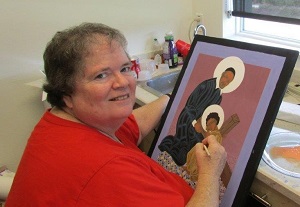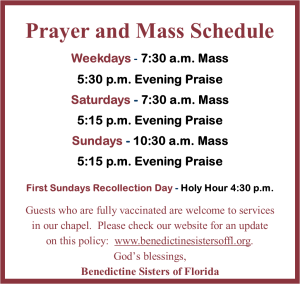Ashes of death on our foreheads,
seeds of hope in our hearts.
As we begin the journey, beyond the cross,
let us remember,
God prepares us for life, not for death,
for resurrection and not for crucifixion,
for love and not for hate.
In a world where death holds us bound, and violence seems to reign
in thought and deed,
may this journey of Lent get us ready
to be God’s good news
of hope and wholeness,
peace and reconciliation,
and resurrection life.
Christine Sine
Death
Ash Wednesday
Ashes of death on our foreheads,
seeds of hope in our hearts.
As we begin the journey, beyond the cross,
let us remember,
God prepares us for life, not for death,
for resurrection and not for crucifixion,
for love and not for hate.
In a world where death holds us bound, and violence seems to reign
in thought and deed,
may this journey of Lent get us ready
to be God’s good news
of hope and wholeness,
peace and reconciliation,
and resurrection life.
Christine Sine
Sister Dianne Wansley
 Sister Dianne Wansley, O.S.B., a member of the Benedictine Sisters of Florida, passed into her eternal life on Friday, December 30, 2022. Born to Howard and Clara (Vann) Wansley on November 22, 1950 Sister was a native of Plant City, FL, the second of three children. Sister Dianne is also survived by her brother Ivan Wansley, sister-in-law Barbara Wansley, niece Kim Wansley and grandniece. Her brother Malcolm Wansley pre-deceased Sister Dianne.
Sister Dianne Wansley, O.S.B., a member of the Benedictine Sisters of Florida, passed into her eternal life on Friday, December 30, 2022. Born to Howard and Clara (Vann) Wansley on November 22, 1950 Sister was a native of Plant City, FL, the second of three children. Sister Dianne is also survived by her brother Ivan Wansley, sister-in-law Barbara Wansley, niece Kim Wansley and grandniece. Her brother Malcolm Wansley pre-deceased Sister Dianne.
Born into a family that was always active in their church, Sister Dianne had a solid Christian upbringing as a Southern Baptist. Her father was a deacon, her mom, a religion teacher. At age 25, after college, she converted to Catholicism in 1976. Wanting to grow in her faith she made a retreat at Holy Name Monastery in Saint Leo. Sister said, “I was impressed by the love that the Sisters had for each other.” She came to the Benedictine Sisters of Florida in January 1978 as a live-in volunteer.
Sister Dianne graduated from University of South Florida, Tampa, FL with a BA in Social Studies education and then earned her master’s degree in Pastoral Ministry with an emphasis on Liturgy from Boston College, Chestnut Hill, MA. She also received post-graduate certification in Spiritual Direction from Boston College.
Joining the Benedictine Sisters in September, 1978, Sister Dianne faithfully served the community for 46 years in numerous capacities. Sister was an accomplished iconographer, artist, served on the liturgy committee, provided spiritual direction for retreatants and was the director of Postulants and Novices (sisters in discernment vow stages) for the Community. She was the organist and pianist for the community. Sister Dianne also served on the Saint Leo Town Commission.
She taught for fourteen years in public and private schools in Florida. In Ocala, FL she taught at both Northern Marion Middle School and Blessed Trinity school. She also taught social studies at Marshall Junior High School (now Middle) in Plant City, FL. She also served as a music minister for student Masses at Saint Leo University.
A Vigil service on Friday, January 6th at 7:00 pm at Holy Name Monastery (12138 Wichers Road, St. Leo, FL). Mass of the Resurrection will be celebrated at Holy Name Monastery on Saturday, January 7th at 10:30 am.
In lieu of flowers, donations may be directed to Benedictine Sisters of Florida, PO Box 2450, St. Leo, FL 33574.
Continue Reading
One Year Later
Our hearts and prayers go out to the many monasteries and convents that have lost Sisters due to the pandemic. While the Benedictine Sisters of Florida have suffered financial loss, we have been immensely blessed. None of the Sisters have become ill with the virus nor suffered any serious illness during the pandemic.
With the coronavirus, we are faced with the fragility of life. Our day will come to meet our Lord and Savior which should be a reminder to be ready.
One year later, it’s impossible to know how much we have lost to COVID-19
~Article by Dan Stockman for the Global Sisters Report, a project of National Catholic Reporter
When the COVID-19 pandemic began a year ago, I read The Great Influenza: The Story of the Deadliest Pandemic in History by John M. Barry about the 1918 influenza pandemic.
The book tells how, when the number of infections exploded in Philadelphia, the first major city in the United States hit by the deadly flu, 2,000 nuns from all over the country came to nurse the sick. Hospitals were overwhelmed, so sisters set up clinics anywhere there was space. As a result, 23 of them died from their close contact with the infected.
hit by the deadly flu, 2,000 nuns from all over the country came to nurse the sick. Hospitals were overwhelmed, so sisters set up clinics anywhere there was space. As a result, 23 of them died from their close contact with the infected.
It occurred to me that hundreds of women religious must have died in that terrible outbreak. There would have been deaths not just among those caring for the sick, but in convents across the country. After all, an estimated 50 million people died worldwide from what became known as “Spanish flu,” and an estimated 675,000 of those deaths were in the United States.
But I could not find any organization that kept track of how many sisters died in that pandemic, let alone told their stories. Hundreds of sisters killed in the United States, and we have no comprehensive record of it beyond those 23. It is an incalculable loss made incomprehensible as it is lost to history.
As I was reading and pondering this in March 2020, convents were going into lockdown, trying to keep sisters safe from the virus that has ravaged their age group. Visitors were barred, travel was canceled, events were postponed.
But it wasn’t enough.
The most insidious part of the COVID-19 virus, of course, is its long incubation period: One can be infected and infect others for up to 14 days before having any symptoms. Some apparently healthy people were, in fact, contagious, and the virus worked its way into convents, retirement homes and assisted-living facilities, where it exploded among the vulnerable population.
As sisters began to die, it quickly became clear that once again, no one was keeping comprehensive track of the religious we were losing. Their ministries, the people they touched, the mountains they moved: All of those stories are in danger of being lost.
I have tried to track them as best I can through Google Alerts and the reader tributes submitted to Global Sisters Report. At least once a week, it seems, there is another sister lost, and sometimes, there are horrible strings of them — a slow-motion story of pain and grief. Occasionally, there are shocking bursts of them all at once.
On April 9, 2020, there were reports that four sisters at the Our Lady of the Angels Convent in Greenfield, Wisconsin, a suburb of Milwaukee, had tested positive for the virus and another had died. Four days later came another death. Then a third, until eventually, six sisters had died at the convent, which specializes in memory care and is shared by the School Sisters of St. Francis and the School Sisters of Notre Dame.
Then came the awful news that four Maryknoll Sisters had died, then a Sister of Charity of Nazareth, a Sister of Mercy, and on and on and on, week after week, month after month.
Among them was Sr. Annelda Holtkamp of the School Sisters of St. Francis in Milwaukee, who was 102. She ministered for decades as a homemaker at convents in Illinois, Nebraska and Wisconsin, serving her fellow sisters until she retired at age 87.
Sr. Raquela Mesa-Acosta from Colombia died while ministering to the Hispanic community in Bridgeport, Connecticut. In her early years in the Congregation of Missionary Sisters of Mary Immaculate and St. Catherine of Siena, she served as a personal assistant to the order’s founder, St. Laura Montoya.
Sr. Georgianna Glose, a Sister of St. Dominic of Amityville, New York, spent 51 years serving people kept poor in Brooklyn’s Fort Greene neighborhood. She also helped sound the alarm on sexual abuse by priests within the Catholic Church. I met her in 2017 while working on a story about Sr. Sally Butler, with whom she lived, and she was outgoing, gregarious and passionate about her ministry.
Sr. Irene Loretta Cassady was beloved at the schools where she taught in Philadelphia. One student said she helped save his life when he was in a coma from a rare blood disorder: She held him in her arms while a priest said last rites. Another time, she insisted on visiting a student in the hospital even though she was in a wheelchair after a severe back injury. She died after nearly 70 years in the Sisters, Servants of the Immaculate Heart of Mary.
How many others, though, will we never even know about?
I suspect we all question life and death and God’s plan and what it all means when there is a death close to us. But watching these reports come in week after week, the litany of lives ended too early, left me a little numb.
Then I saw the pain up close and in person.
The Congregation of the Sisters of St. Felix of Cantalice, or Felician Sisters, in Livonia, Michigan, lost 12 sisters from April 10 to May 10, 2020, and a 13th on June 27, 2020. Making the Felicians’ anguish even worse: They could not observe their usual traditions when a sister dies. In fact, they largely couldn’t leave their rooms at all, in an effort to stop the spread of the virus, and spent months in something like solitary confinement.
They were in shock. They had been through profound trauma and had almost no way to express it — until I reached out and asked whether they might be interested in telling their story to GSR. Once they were out of quarantine, I visited them, spending a day doing masked interviews conducted at least 10 feet apart. I was probably the first guest at the convent in months.
They had suffered such incalculable loss, but they wanted to tell their story. They wanted the world to know about these women, who had been teachers, a librarian, an organist, a nurse. They found some comfort in telling their story and even more comfort from the reaction: gifts, notes, love and condolences from around the world.
I had to enter their pain to write about it, but I took comfort that their story was told and that it brought them some measure of healing. You cannot share in someone’s grief and not be changed.
The reports of sisters dying continued through the summer, fall and winter. And my efforts to track them are completely inadequate: The Google Alerts and reader tributes only find the late sisters that someone wrote a news story about or sent in to GSR. If there is only an obituary, the sister’s death won’t show up in a news search; a search of obituaries would miss any that do not include the words “COVID” or “coronavirus,” which is most of them. My sifting of sister deaths overseas is even worse, as it only includes English-speaking countries or English-language coverage.
This poor accounting has found 95 sisters lost to COVID-19 in the United States, but the true number must be at least triple that. The deaths I know about outside the United States number only 155. I hate to even think about what the real number — and scope of the loss — is.
One community I talked to explained they have a standard practice when a sister dies: An obituary is published, and she is added to the list of deceased sisters on the website. They do that whether the sister was well-known with significant public achievements or whether she had a ministry of prayer. To issue a press release or allow a news story about only some sisters who died simply because of what caused their death wouldn’t be right, they told me.
I understand that. But the greater church needs to know the extent of our loss. We have no full concept of what this pandemic has cost us. We cannot fully mourn these sisters if we don’t know they’re gone.
We’re supposed to learn from history, yet we are repeating it. I can only imagine someone 100 years from now wondering what the toll was among those who dedicated their lives to serving God and his people and finding that no one counted them.
Perhaps this is a job for researchers rather than reporters, or each country’s umbrella organizations for religious. I don’t have the answers, only the questions that need to be asked.
This reaping is already tragic. We owe it to those who died to be able to tell future generations what we lost.
Continue Reading
The Law of Life
I’m sure you’ve heard it said there are three things that are best left out conversation at of family gatherings. You know them: Religion, sex, and politics. But, unless your family has taken an oath of silence, we do talk about those things. We just do it really badly. I think there may be one more topic we do not talk about. Death. Yes, we acknowledge death when it happens but for the most part we do not talk about death with any real depth or substance, and certainly not with any enthusiasm. Most people try to deny it, ignore it or just avoid it.
The death of our loved ones is too real, too painful. Our own death is too scary. The relationships and parts of our lives that have died are too difficult. So, for the most part, we just avoid the topic of death. Besides it’s a downer in a culture that mostly wants to be happy, feel good, and avoid difficult realities.
 In today’s reading Jesus brings up the topic of death in an indirect way. You can almost see Jesus words when He says “I am troubled now.” They are so visually clear. He told his listeners: “If a seed is planted into the ground and it does not die, it remains a seed. But if it dies, it produces many seeds and seedlings and those seeds and their seedlings produce much fruit.”
In today’s reading Jesus brings up the topic of death in an indirect way. You can almost see Jesus words when He says “I am troubled now.” They are so visually clear. He told his listeners: “If a seed is planted into the ground and it does not die, it remains a seed. But if it dies, it produces many seeds and seedlings and those seeds and their seedlings produce much fruit.”
It all begins with the seed dying. So, could it be that the key to life is death? Could it be that the key to living is dying? Could it be that dying is important to living? Think what happens when seeds are planted into the ground.
I came “this close” to being a biology major because in my early days in community someone thought it would be good if we had a member who could teach upper grades science. [But I was saved by an educational career specialist who recognized that my talents – and bent – lay in another field and direction.]
If you’ve ever taught children in the lower grades, or you may remember yourself, putting a lima bean in a wet paper towel against the inside of a glass so you could see what would happen. Recall how we put one of the containers with beans on a window sill and the other in a dark cabinet? Then we noted our “observations” – our big new scientific word. We witnessed what the teacher told us to be true. Inside every seed is an embryo and every embryo has a root and a shoot; and inside that little embryo, (and this is the real a miracle), there is an “on” and “off” switch. REALLY! Every seed has a “on” and “off” switch; they really do!
There is also a thin coat around that seed which protects it from oxygen getting in prematurely. When the dormant seed is planted into the ground, and allowed to mature naturally, at the right time, the switch goes “ON” and the seed takes in water, and it miraculously begins to expand – the seed coat breaks and the seed begins to mature and produce sugar and protein. And then down goes the little roots and up grow the little shoots, and the shoots produce more seeds which produce more fruit. And, that’s when the seed dies!
Jesus said this! “Unless a seed dies, it remains a single seed; but if it dies, it produces many seeds and much fruit.” This is the law of life that Jesus teaches us today. It is in dying that we live. In fact it is only by first dying that we will ever begin living.
When the cycle of nature is disrupted … when death does not produce new life, it is remains just a single seed … It might survive a while – but it never produces fruit. If we refuse to die to self, we might survive, but we aren’t rally alive in the Spirit. Resurrection is always hidden within death. However, without death there can be no resurrection.
Lent is a good time to practices “little deaths” to self: giving up a self-serving idea, in good spirit changing an opinion, letting go of an ambition, so that God might coax us (like the seedling) to follow the light in order stand erect and put down roots in the spirit of Benedict deep into community life.
And when it is our time, when the water of God’s grace and the light of God’s love can penetrate our thick shells we will know, and be enabled to divest ourselves in favor of new life. May we graciously lay down whatever the habit we have developed, or the challenge we’ve been stepping around for so long. (In the image of the plant), allow those things to become fertilizer for the next seedlings God plants in our hearts.
Francis of Assisi knew all this well when he wrote in his famous Prayer for Peace; “It is in giving that we receive; it is in dying that we are born to eternal life.”
~Reflection by Sister Roberta Bailey, OSB, Prioress
First Reading Jeremiah 31:31-34 Second Reading Hebrews 5:7-9
Gospel John 12:20-33
Continue ReadingAll Saints’ Day, also known as Day of All Saints, Solemnity of All Saints and Feast of All Saints
 November 1st is All Saints’ Day when Roman Catholics honor all saints, known and unknown of the Christian church. This solemnity comes from Christian tradition of celebrating the martyrdom of saints on the anniversary of their death.
November 1st is All Saints’ Day when Roman Catholics honor all saints, known and unknown of the Christian church. This solemnity comes from Christian tradition of celebrating the martyrdom of saints on the anniversary of their death.





